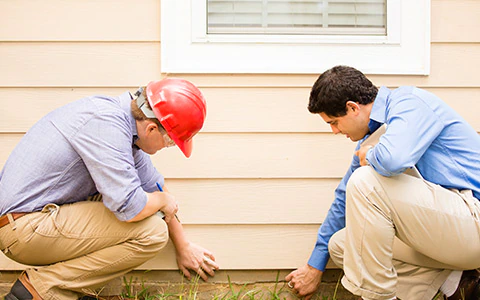Building inspections play a vital role in disaster preparedness. Natural disasters such as earthquakes, hurricanes, and floods can cause significant damage to buildings, putting occupants at risk. Building inspections can help identify potential hazards and ensure that buildings are structurally sound and safe for occupants in the event of a disaster.
In this article, we will discuss the role of building inspections in disaster preparedness, the importance of regular inspections, and how inspections can help to prevent or mitigate the effects of disasters.
The Role of Building Inspections in Disaster Preparedness
Building inspections are an essential component of disaster preparedness. They can help identify potential hazards and ensure that buildings are up to code and structurally sound, reducing the risk of damage or collapse in the event of a disaster.
Building inspections can also help to identify areas where improvements can be made to make buildings more resilient to disasters. For example, building inspectors can identify areas where additional reinforcement or retrofitting may be necessary to protect buildings from earthquakes or high winds.
In addition to identifying potential hazards and areas for improvement, building inspections can also help to ensure that buildings are in compliance with building codes and regulations. This is important because building codes and regulations are designed to protect the safety of occupants and ensure that buildings are structurally sound.
The Importance of Regular Inspections
Regular building inspections are essential for disaster preparedness. They help to identify potential hazards and ensure that buildings are up to code and structurally sound. Regular inspections can also help to identify areas where improvements can be made to make buildings more resilient to disasters.
Building inspections should be conducted regularly, typically annually or as needed depending on the age and condition of the building. In addition to regular inspections, buildings should also be inspected after any significant event that may have caused damage, such as an earthquake or hurricane.
Regular inspections can also help to identify potential hazards that may have been caused by wear and tear or neglect. For example, a leaky roof or faulty electrical wiring can pose a significant hazard in the event of a disaster.
How Inspections Can Help to Prevent or Mitigate the Effects of Disasters
Building inspections can help to prevent or mitigate the effects of disasters in several ways. Firstly, building inspections can identify potential hazards that may pose a risk to occupants in the event of a disaster. For example, a building inspector may identify a crack in the foundation or a weak roof that could collapse in the event of an earthquake or hurricane.
Secondly, building inspections can help to ensure that buildings are up to code and structurally sound, reducing the risk of damage or collapse in the event of a disaster. For example, a building inspector may identify areas where additional reinforcement or retrofitting may be necessary to protect buildings from earthquakes or high winds.
Thirdly, building inspections can help to identify areas where improvements can be made to make buildings more resilient to disasters. For example, a building inspector may recommend the installation of hurricane shutters or the reinforcement of walls and roofs to protect against high winds.
Conclusion
In conclusion, building inspections play a vital role in disaster preparedness. They help to identify potential hazards, ensure that buildings are up to code and structurally sound, and identify areas where improvements can be made to make buildings more resilient to disasters.
Regular inspections are essential for disaster preparedness and should be conducted annually or as needed depending on the age and condition of the building. In addition to regular inspections, buildings should also be inspected after any significant event that may have caused damage.
By identifying potential hazards, ensuring that buildings are up to code and structurally sound, and identifying areas where improvements can be made to make buildings more resilient to disasters, building inspections can help to prevent or mitigate the effects of disasters, protecting the safety of occupants and minimizing the damage to buildings.



